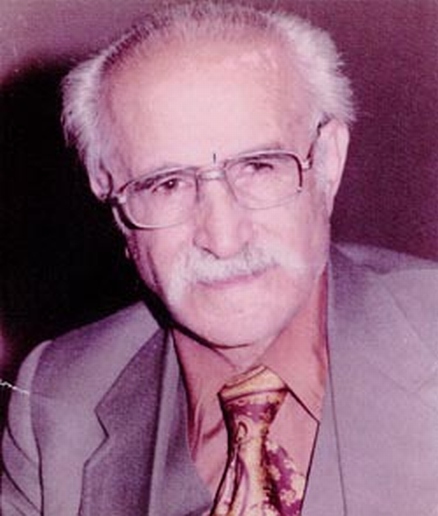 Despites the many obstacles before his life as an artist, Abdollah Tale’e Hamedani kept the dynamic stream of his life flowing toward the flourishing of his arts. Throughout this long and fruitful passage, he tried to preserve the deep identity which he was so fiercely proud of, and this drive made him remembered by the posterity as one of the glorious figures of Persian poetry, literature and music.
Despites the many obstacles before his life as an artist, Abdollah Tale’e Hamedani kept the dynamic stream of his life flowing toward the flourishing of his arts. Throughout this long and fruitful passage, he tried to preserve the deep identity which he was so fiercely proud of, and this drive made him remembered by the posterity as one of the glorious figures of Persian poetry, literature and music.
Abdollah Tale’e Hamedani was born in 1913 C.E., 1292 of the Persian calendar, to a religious Jewish family of Hamedan, Iran. He received his elementary and high school education at Ta’yid and Alliance Israélite schools. He then left for Tehran to pursue his studies in Persian language and literature.
Merely 14, the young Tale’e’s artistic gifts and enthusiasm in poetry blossomed, although the feat came as no surprise to his cultured and artistic family. Despite that in Iran of the time, arts were largely viewed to be good for “lowly entertainers”, deemed mainly in terms of some worthless performance arts, his mother had long nurtured her beloved son with the milk of poetry and the honey of music. She was an artistic woman, who herself was, as with most other women of her time, a victim of blind prejudice and bigotry. Shortly afterwards, his father placed him under the tutelage of such masters as Maftoon Kebriya-yee, Badiei and Ahmad Sajedi. The young Abdollah then found his way to the school of Molana Yousef-Zadeh Ghammam Hamedani.
In 1933, at the age of 18, he composed his first “tasnif” or “Persian song” entitled The Autumn Wind, in the Persian mode of “Abou-Atta”. The work opened the gates before him to meet the great Iranian master and song-writer of the time, Aref Ghazvini. Tale’e Hamedani expanded his artistic endeavors in poetry, literature and music until 1941, when he performed in a series of concerts in Tehran. Over the years, he much benefitted from the violin school of Master Taghi Shayegan. He also met with such musical masters as Maestro Abol-Hassan Saba, Morteza-Khan Nay-Davoud, Mousa-Khan Nay-Davoud and the famed singer, Ghamarol-Molouk Vaziri, going on to collaborate with them. Over the course of an artistic career that would span more than half of a century, Tale’e Hamedani wrote original poetry and composed music for his own poems, played his works on violin, and on occasion, sang them with his sweet lovely voice, so far as it felt like the ultimate answer to the desires of tired hearts, the hearts of the true lovers and followers of Persian traditional music.
In 1944, Iran Radio invited Tale’e Hamedani to join its rank of artists to compose for voice and instruments. As the result of the young master’s gifts and love of the art, most of his works were performed by the such great singers as Ghamarol-Molouk Vaziri, Molouk Zarrabi, Rouh-Bakhsh, and Dariush Rafiei, although at times, the maestro performed his own works. In 1947, he married Balfouria, whose support, assistance and encouragement would help him through the ebbs and tides of his artistic life. The couple brought three daughters and two sons to the world. Maestro Tale’e Hamedani was an honorable man with a modest and mystical “dervish” personality. An artist and art connoisseur, he was considered one of the prominent figures of the Jewish community, whose art served his true faith in people.
Tale’e was one of the pioneering founders of poetry and literature organizations, as well as charity and public welfare institutions, both in Hamedan and Tehran, including the Literary Club of the Hamedani Residents of the Capital. He was fluent in English and French, and he spent much of his time revising and correcting collections of poetry before going to the print. He also personally gave free poetry and music lessons to motivated students.
Abdollah Tale’e Hamedani, this free-spirited and artistic poet, died in the fall of 2003, the month of Aban of 1382 of the Persian calendar, at the age of 92.
Following the master’s death, his daughter Shirin collected her father’s unpublished works and had them published along the best of his other works in a collection entitled The Divan of Tale’e Hamedani. Shirin has also published and distributed many of her father’s songs and instrumental works available on CDs.
